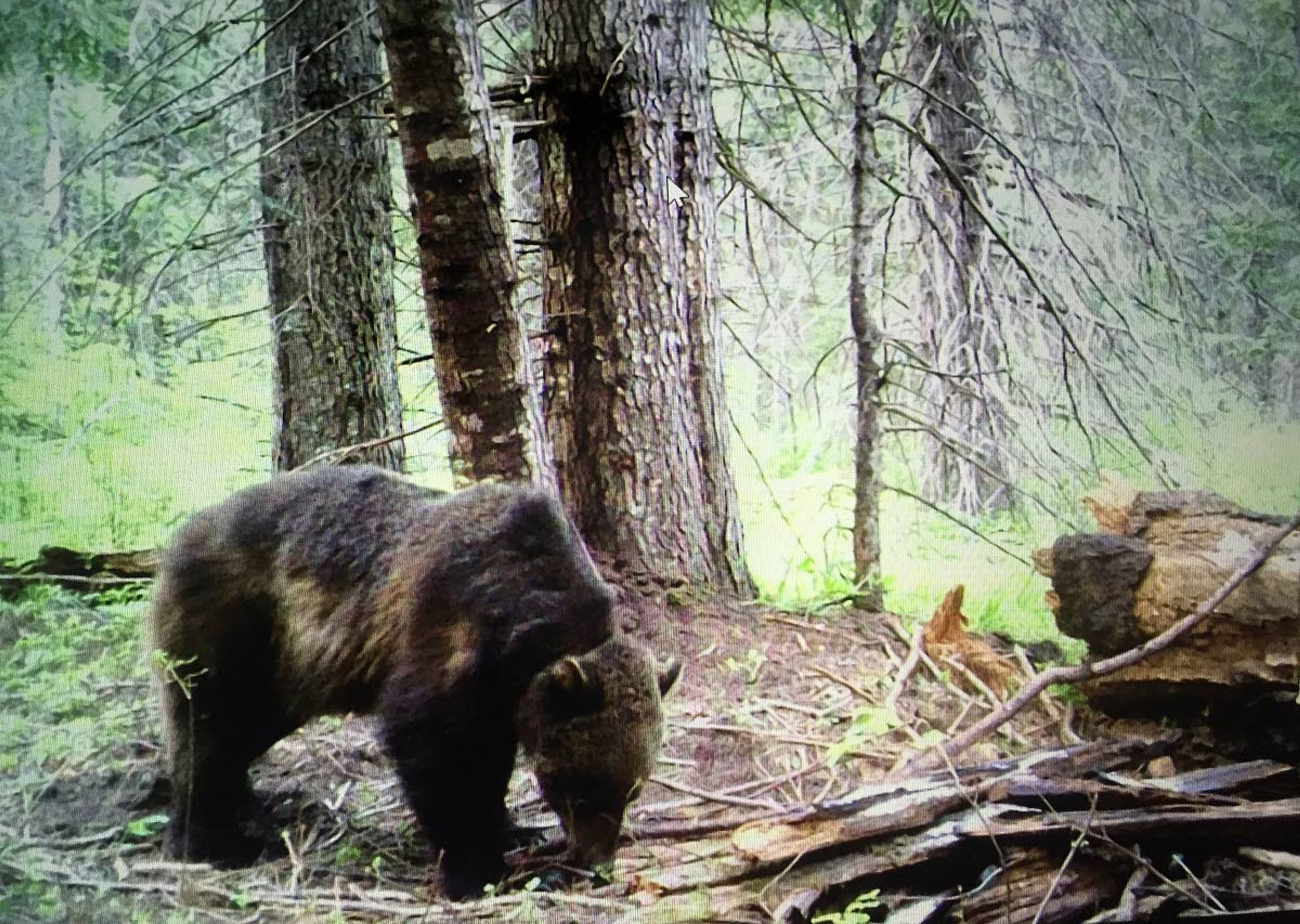Barely discernible bears
Early discovery of possible grizzly tracks haven’t led to more sightings
If 2019 was the year of the grizzly for north central Idaho, its successor is shaping up to be something less than that.
At least for now.
It’s true that grizzly bear news came out of the gate hot this spring when what looked like fresh tracks were found in snow near Fish Creek Meadow above Grangeville. But since that time, any grizzly bears roaming the wilds of Clearwater Country, if they exist, have kept a low profile.
Idaho Fish and Game officials plucked hair samples from the tracks near Fish Creek Meadow and submitted them for genetic analysis. Toby Boudreau, wildlife bureau chief from the Idaho Department of Fish and Game at Boise, said laboratory experts were not able to extract DNA from the hair.
Hair samples associated with another set of grizzly-like tracks found near Grangeville this spring came back as belonging to a black bear, said J.J. Teare, regional supervisor for the Idaho Department of Fish and Game at Lewiston.
“Melting snow can make for big-looking tracks, but we do have some very large black bears in the region that do lay down some big tracks,” Teare said. “The identifying feature for grizzly bear track is claw length from the front of the pad.”
Teare said his agency hasn’t received any credible reports of grizzly bears, grizzly tracks or photos of the great bears in the past several months.
Last summer was a different story, one that involved at least two confirmed grizzly bears in the region and perhaps more.
For much of the 2019 summer, a young male grizzly bear roamed the bitterroot mountains south of U.S. Highway 12 and the Lochsa River, sometimes within the Selway-Bitterroot Wilderness Area. That bear was wearing a satellite collar that allows wildlife biologists to keep tabs on its movements.
The young bruin was taken from the northern continental divide population in north central Montana in 2018 and introduced into the Cabinet Mountains of western Montana as part of an effort to augment the population there. Grizzly bears are listed as threatened under the Endangered Species Act.
The bear, known as 927, made a foray into Idaho two years ago before returning to the Cabinets, where he denned. In 2019, the bear returned to Idaho and moved further south, eventually setting up shop near Lolo Pass. He stayed there for the summer but returned to the Cabinet Mountains in the fall and spent the winter there.
This spring, bear 927 charted a new course. Wayne Kasworm, a grizzly bear biologist for the U.S. Fish and Wildlife Service at Libby, Mont., said 927 is now northeast of Eureka, Mont., not far from the U.S.-Canada border and back within the Northern Continental Divide Ecosystem.
Young males are known to wander, but Kasworm said 927 is peculiarly nomadic.
“This is at least a little bit unusual, as far as the amounts of movements out of this particular bear, and at least to me what is a little more unusual is the fact that he went so far south and now he has gone so far north, and he is back in the same population he came from.”
The other known grizzly bear to have been in north central Idaho last year was also somewhat of a rolling stone. It was photographed in the White Bird Creek drainage. Hair samples identified it as a male grizzly that was radio collared by the U.S. Fish and Wildlife Service in the Selkirk Mountains near the Idaho-Canada border in 2017. The bear was a yearling at the time it was collared. The radio collar fell off the bear in 2018.
Teare said the whereabouts of that bear are unknown. Fish and Game officials assumed it might be the same bear that left tracks near Fish Creek this spring.
“He was a traveling bear, on the move for several years, and could have just wintered here and moved elsewhere,” he said. “We don’t have a collar on him.”
There were also trail camera photos of other grizzly bears last year. One was in the Newsome Creek drainage high above the South Fork of the Clearwater River. The other was also near Lolo Pass. But wildlife managers don’t know if those were yet more individual grizzly bears or perhaps just images of 927 and the White Bird Creek bear captured as they moved about the area.
Kasworm’s agency continues to monitor known populations of grizzly bears. This year his colleagues have trapped and collared five male grizzlies in the Selkirk Mountains.
“All of them were radio collared, and one has already lost its collar. The problem we face with adult bears is they have more neck than head, and it’s hard to keep a radio collar on a pear.”
Idaho Fish and Game also is monitoring grizzly bears. Boudreau said he and other biologists trapped two grizzlies near Island Park west of Yellowstone National Park this week.
Barker may be contacted at ebarker@lmtribune.com or at (208) 848-2273. Follow him on Twitter @ezebarker
“The problem we face with adult bears is they have more neck than head, and it’s hard to keep a radio collar on a pear.”
Grizzly bear biologist Wayne Kasworm











